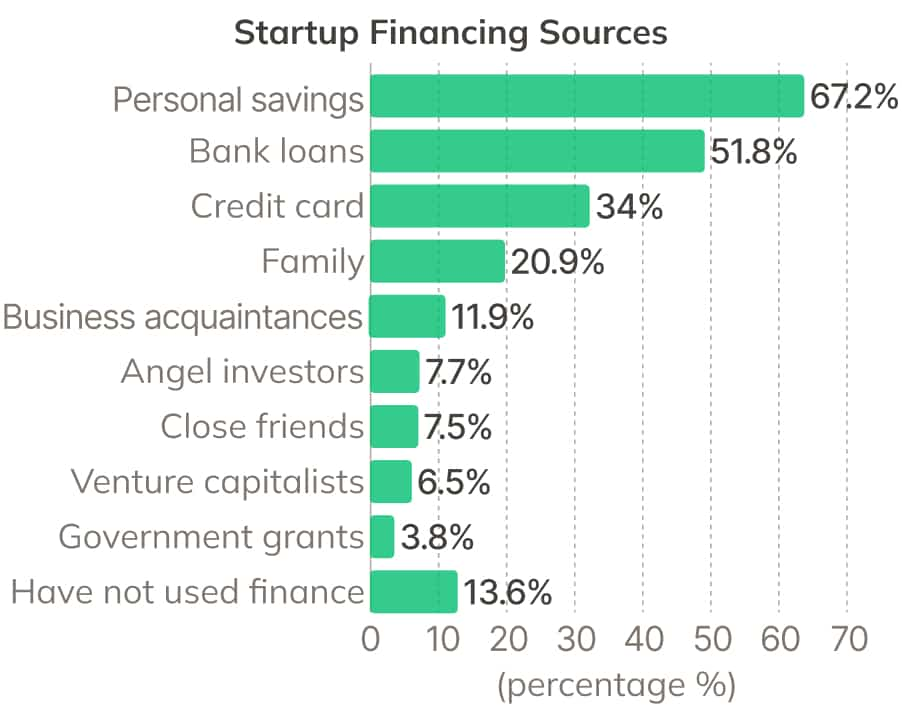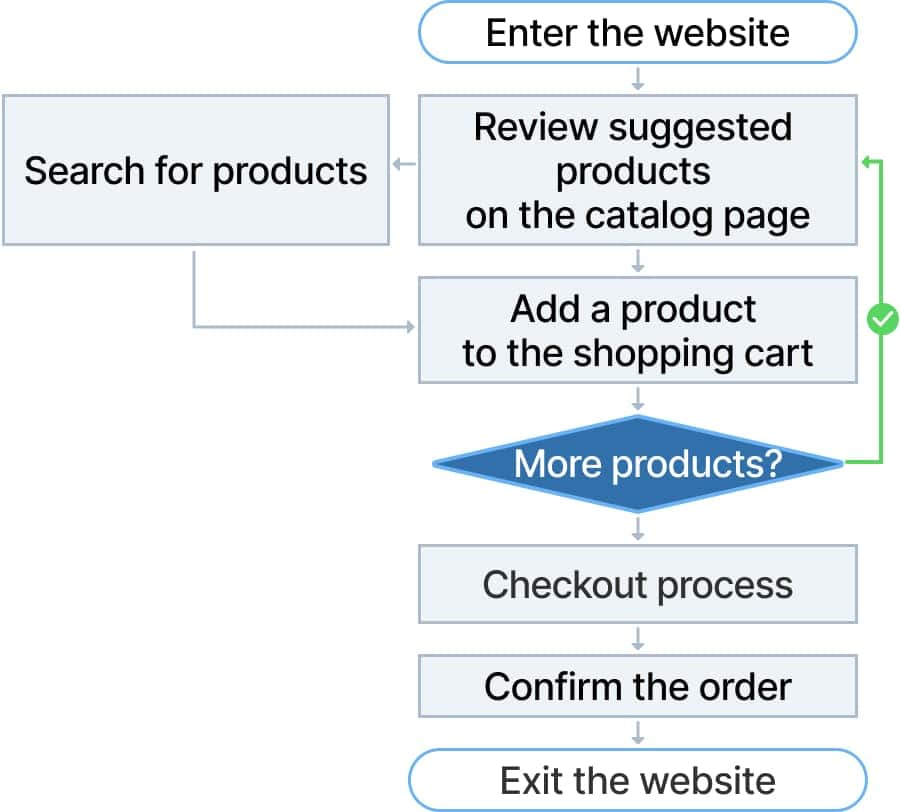How to Pitch an App Idea to Investors
Topic: Guides

January 17, 2024
Have an idea for an app but no money to kickstart your tech venture? You're not alone. Almost every startup founder faces this, with only a minority reaching profitability without the need for fundraising.
In one of the previous articles, my colleague already explained how to get an app idea off the ground. Now, I'll focus on explaining how to get people to invest in your business. I'll outline steps to locate private investors looking for projects to fund and compellingly pitch an app idea. Plus, I'll explain how Cyfrania, as IT partners, have been helping aspiring entrepreneurs on this path for many years.
Basics of Fundraising
Who is ready to put money into startups, and what's the process? Let's start with the fundamentals.
Understanding Pre-Seed and Seed Funding
You're sitting on an app idea and want to grow your business to profitability. The early-stage investments for this, from the idea phase to establishing a working business model, are termed pre-seed and seed funding.
Pre-Seed Funding
In the pre-seed phase, it's about defining the idea and planning. At this stage, startups typically face the following tasks:
- Testing and refining the app concept and business idea.
- Conducting market research, developing a business model, and marketing strategy.
- Contacting developers and planning the app launch.
Seed Funding
Seed funding covers the stages which main objectives are:
- Assembling a team and developing an app.
- Executing a marketing strategy.
- Growing the user base to start earning revenue.
Who Invests in Startups?
I'll outline the primary funding options for tech business founders, detail the early stage tech investors involved, their key motivations, and typical terms for startup investments.
Bootstrapping
It's a basic and often-chosen way to finance a business using personal resources. Entrepreneurs typically do this by using personal savings, selling assets like stocks or cars, or drawing on retirement funds and home equity. This method keeps full control of the business and avoids loan repayments. The downside is the risk to personal finances, and besides, it's usually just not enough.
Family, Friends and Personal Connections
This route means you are borrowing money from those you know personally. They tend to be more supportive than traditional financial backers, more likely to believe in you and your idea, and may offer far more advantageous repayment terms. However, the downside is that if the business fails to repay, it can negatively affect your relationships with friends or family.
Bank Loans and Private Lending, Including Online
An entrepreneur can take a loan from a bank, financial organization, or individuals, like through peer-to-peer lending platforms. It's often easier than setting up a successful crowdfunding campaign. But, banks see startups as high-risk and usually need collateral. Also, the repayment times and interest for these loans often don't fit a business that hasn't grown enough to pay back by the deadline.
Crowdfunding
Online crowdfunding platforms let companies seeking investment raise funds online by small contributions from many people. While some backers might seek repayment or company shares, there's also an option to draw in people excited about an upcoming app by offering discounts, free subscriptions, etc. Crowdfunding often provides more funding than loans. However, it requires conducting a comprehensive public campaign for success.
Angel Investors
Angel investors are savvy entrepreneurs investing personal wealth in startups they believe in. They trust their intuition, embracing high risks without insisting on returns if the venture collapses. They contribute not just capital but also their know-how and networks. However, this means relinquishing a significant company stake. Besides, engaging and persuading these investors is no easy feat.
Venture Capital Firms
Venture capital, from wealthy individuals and investment banks, is managed by professional financiers. They invest in fast-growing businesses, offering capital for equity and also providing mentoring and support. They seek quick, substantial returns, so a project needs proven user adoption with clear signs of growth to interest them.
Explore this chart to gauge the prevalence of these funding sources for startups. It's based on the Kauffman Foundation's data from a survey of approximately 100,000 startup businesses.

Preparing Data for Your Pitch: Laying the Foundation
No matter how brilliant an idea is, it alone isn't enough to convince investors seeking projects to fund to believe in your app's prospects and your ability to make it happen. Effectively presenting your idea will require significant preparation. Below, I'll go through each step to show you how it's done.
As future entrepreneurs come to my team at the very beginning of this journey and discuss their ideas, we aid them in accomplishing many of these actions, and we have established a distinct procedure for this, which we will elucidate here. Nevertheless, you have the option to undertake these steps by yourself.
Write Down Your Idea
Anyone attempting this for the first time quickly realizes that summarizing on paper what seems so simple in their mind is not easy at all. Our customers get help from a business analyst who chats with them and helps fill out a special template called the Vision Document. Click on the link to view an example of the app description and get our template.
You can also use any other similar template from the internet. Use it to outline the app target users, the challenges they're currently dealing with, how the app will provide solutions, and the significant value it will offer. This way, you'll have a brief one-page document to showcase, and people will quickly grasp your concept.
This stands as the initial step in the preparation of presentation materials, and it's also the outset of the process of evaluating and refining your idea. By extracting your thoughts from your mind and observing them objectively, you'll immediately uncover weak points that should be addressed.
Visualize Your Idea
A picture is worth a thousand words, whether they're spoken or written. Present your concept visually, and you'll significantly boost your potential to pique your interlocutor's interest.
It can start with something as simple as flowchart, outlining the user's steps in the app, similar to the one in this picture. You can try creating one yourself, using examples from the internet as a guide, or you can seek assistance from a business analyst. It's cost-effective and can save you a lot of time.

Another approach to visualization involves using wireframes, which are black-and-white layouts of essential app screens. You can see an example in the next picture. Like flowcharts, they can be created without advanced design skills and are suitable for initially presenting your idea to the public.
As your idea takes a more distinct shape, you might consider producing design samples of the app and even interactive, clickable prototypes. This is how you can show the appearance and experience of your app. In Cyfrania, professionals such as a business analyst and a designer are here to help customers in crafting these.

Talk to as Much People as You Can
Now that you have materials you can share with others, it's time to start sharing them! This is just the preparation stage, so right now, it's primarily about gathering feedback on your idea. Who should you talk to? Anyone you can! Family, friends, your contacts on social media, and especially potential users within your reach, whether it's online or in-person. Every perspective can be highly valuable.
- Is the problem you intend to address genuinely relevant to people?
- How are they currently dealing with it?
- Does the application seem appealing to them?
- Would they consider paying for such a service?
These are all incredibly important questions that will assist you in identifying and rectifying deficiencies in your concept, while also confirming if you're on the correct path. At the same time, it definitely makes sense to explore the possibilities of attracting investments.
- Are your conversation partners open to investing in your project?
- If so, what terms are they looking for?
- Can they connect you with someone in their network who might have an interest in this?
Research Competitors and the Market
This is yet another important and fairly extensive aspect of the preparation process. You should determine whether there are similar applications or services available in the market, what their strengths and weaknesses are, and how you can outperform them.
It's also essential to collect data. Find out how many people worldwide require your app, analyze the trends - is the demand increasing or decreasing, and assess the reachable audience. Additionally, consider their current spending on comparable services.
You need all this data for two main reasons. Firstly, it's crucial to ensure your idea is viable. Secondly, it acts as proof for prospective investors that your project genuinely holds promise.
Define Your Business Model
With these details in hand, you can start developing your business model, outlining how you'll generate revenue through your app. It's advisable to utilize a template once more - the Business Model Canvas, readily available online. This will aid in organizing your thoughts, ensuring nothing is overlooked, and providing you with a succinct document for showcasing to interested individuals.
Lay out in this template your distinctive value proposition, your user acquisition strategy, your selected app monetization method, the necessary resources, and so forth. This will certainly encourage deeper thinking, as it's not just a presentation tool but also a means to refine the concept.
Estimate Funding Needs
How much capital is needed to construct and initiate your app? Here, the development team lends their support once more. Post-research, your app idea is likely to have altered and crystallized. You have a better understanding now of your app's desired features.
Starting from this concept, the development team will formulate a plan. They will sort out the volume of functionality needed and decide which parts are crucial for the first release and which parts can be delayed. They'll identify where savings can be made and where extra durability is necessary, in line with your long-term aims, and then pick the suitable technologies for the build.
The outcome will be a roadmap that outlines the development milestones, their deadlines, and the costs involved. These are the primary expenses for starting your tech business. Your costs might also cover the fees for extra professionals such as public relations, marketing, and sales, should you choose to employ them.
Crafting a Winning Pitch Deck
All the necessary data is collected, and the business plan is ready. Now, you need to make a pitch deck that shows your idea in a way that's very concise, clear, visually appealing, and incredibly convincing. It usually consists of 10-15 slides; here's a description of the most important ones.
- Company's Mission. Why does your company exist? Describe your company and its contribution to the world in a few concise and expressive phrases to immediately capture investors' attention.
- Problem. What problem are you trying to solve with your app? Describe the pain points of future app users and how you're aware of their reality.
- Customer. Who are your app users? Describe who your product is for and how you will reach them.
- Solution. Why is this a great app? Outline the primary features of your application and their value to users.
- Timing. Why launch your app now? Explain why you think it's a good idea to invest in your project right now.
- Market. What is the market opportunity? Detail the market size you're capable of accessing and supply the most convincing proof that it's genuine.
- Competition. Who are your competitors? Indicate what exactly you can give to users that others do not.
- Traction. How many users has your app attracted so far? Specify the actual or projected user acquisition metrics.
- Business Model. How do you plan to make money? Show how users become a source of revenue, offering actual or anticipated figures.
- Team. Why are you the right team to build this product? Outline the expertise of those involved in your project and show why they are equipped to succeed.
- Financial Details. How much funding do you require, and what will it yield? Share your financial projections and funding needs.
Keep in mind that visuals like graphics, charts, and screenshots are more powerful than lots of words. Additionally, this presentation should be capable of serving as both a reference for your speech and as self-contained material that can be provided to prospective investors.
Given the importance of a pitch deck, which must make the most of the investor's precious attention to convey the value of your project, it makes sense to involve a professional designer in its preparation. Our customers receive all-around support from our designer in creating a pitch deck and any other due diligence documents needed for an app idea submission.
Should you choose to independently prepare your pitch deck, you can readily find examples and templates on the internet.
Finding a Right Investor
You're now prepared for a meeting with prospective investors. But how to contact angel investors or find other funding sources? Let's explore the options for where to pitch an app idea.
Professional Networks and Social Media
Professional networks and social media, especially LinkedIn, offer numerous invaluable opportunities for aspiring entrepreneurs with the goal of raising funding. Specifically, here's what you should definitely do there:
- Present your product and mission, build your brand, narrate your startup journey, discuss your successes and failures to create an authentic and engaging story that resonates with prospective investors.
- Learn from the journeys of fellow startup founders and entrepreneurs. Reach out to them for guidance, support, and connections with interested tech startup investors. You also may request their kind introduction of your project to these investors.
- Take part in industry events, conferences, and pitch competitions. It's a great opportunity to raise awareness about your project, get feedback and advice, build valuable connections, and maybe even meet prospective investors.
- Identify app angel investors who support projects akin to yours, whether in the B2B or B2C sector, within your niche, and at your scale and stage. Take the time to understand their preferences, investment portfolio, and previous endeavors to customize your presentation before reaching out to them.
Banks and Other Financial Institutions
Consider finding out the terms on which you could secure a loan from a bank or private lenders. Numerous banks provide dedicated financing schemes for startups and small enterprises. There also might be government support initiatives that you may consider investigating. Or you may choose to seek connections with investment bankers for startups.
Crowdfunding Platforms
Kickstarter, GoFundMe, and a plethora of similar online platforms offer the chance to raise funds from individual investors. You might choose one of these platforms; but remember that achieving success in crowdfunding necessitates a wide reach on social media and within personal connections.
Angel Investor Networks
Online platforms like AngelList and Gust focus on linking startups with investors. They are backed by vast networks of angel investors, numbering in the hundreds and thousands, who offer financial support to small startups or entrepreneurs. By presenting your project there, you'll reach all of them.
Startup Incubator and Accelerator Programs
Programs like Techstars or Y Combinator offer education, resources, and mentorship to early- or mid-stage founders, including access to an alumni network and investor connections. Many also organize in-person and online demo days - special events where entrepreneurs can present their projects to a large audience of interested investors. You can apply and participate in contests for such programs.
Reaching Out to Individual Venture Capitalists and Angel Investors
You can just search for investors lists, angel investor databases, or individual angels and venture capitalists on the internet and social media. Send them a brief, enticing overview of your idea, project, and the business opportunity, and make sure to reach out to as many as possible.
Final Thoughts
Based on the experiences of many entrepreneurs who have effectively secured financing, investors are searching for two main things in candidate startups:
- Passion and a believable dream. A significant part of success lies in forming an emotional connection, being genuine and enthusiastic, placing trust in the project value, and telling a sympathetic story.
- Evidence proving the reality of that dream. It's important to provide as much evidence as possible to show that the project has potential and you are capable of realizing it.
Your goal is to fully leverage both approaches, relentlessly refining your pitch and attentively listening to and using any feedback from investors.
Acknowledge that pitching is tough. Entrepreneurs aren't professional speakers, and few can present their brainchild calmly under scrutiny. But with practice, anyone will get better. Trust in your idea and your pitch; perseverance is key. Prepare to converse with a multitude of individuals.
In case you need support and professional help from an IT partner capable of taking on every technical aspect of your project, we are always ready to provide assistance!